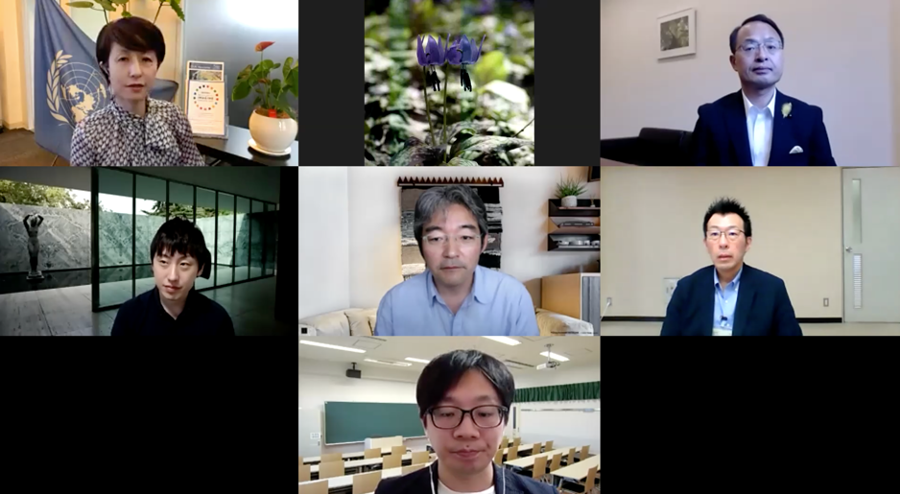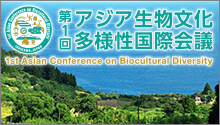At many UN meetings on the matter, it has been said that local municipalities have a vital role to play in achieving the SDGs, to the point that of the 169 targets of the SDGs, 65% are estimated to be difficult to achieve without the participation of local municipalities. At this webinar, we discussed what kinds of initiatives should be undertaken at a municipal level in order to encourage transparency in municipal administration and cooperation and participation from citizens regarding setting and monitoring indicators for the SDGs.
First, representing Kanazawa City, the event’s co-sponsor, Yukiyoshi Yamano (Mayor of Kanazawa City) gave an opening speech. “In terms of governance, I think even simple daily tasks will effectively contribute to the achievement of the SDGs. In order to maintain motivation, I think it is important to create an environment in which it is easy to see the progress made towards our targets. Each municipality needs to have achievement targets and monitoring systems that are appropriate for them, and which are publicized in a way that allows citizens and partners to see the progress made as well. It is vital to maintain mutual understanding as we advance our efforts,” Yamano opined.
The first keynote lecture was given by sustainability and regional revitalization researcher Shun Kawakubo (Associate Professor, Hosei University, Faculty of Engineering and Design, Department of Architecture) on the topic of “Local SDGs Promotion and the Significance of Target-Based Monitoring.”
To support local municipalities, Kawakubo is developing a local SDGs platform in order to make the status of local SDGs initiatives more visible. The platform also includes interview articles from the municipalities and ways to share and announce new initiatives. While he encouraged the municipalities to utilize the platform, he also emphasized how vital it is to proactively involve the citizens when establishing SDGs indicators that reflect the current status of progress made, saying, “It’s important for citizens to have the awareness that the SDGs are an issue close to their hometown, and to encourage them to incorporate working towards the goals in their everyday lives.”
The second keynote lecture was given by Kenichiro Fukushima (Board Representative, Code for Kanazawa/Civic Tech Japan) on the topic of “Citizen Participation Through Technology: What is Open Governance?”, in which he discussed using open governance and civic technology to implement local SDGs, monitor indicators, and encourage citizen participation.
Fukushima explained that because it is best to have citizens participate in the process of monitoring and gathering indicator data, it is vital to have transparency in government work and create a society that allows citizens to participate; in other words, it is important to create a framework of open governance. He went on to say, “Municipalities must consider to what extent they are able to utilize technology within the scope of their limitations, and to keep an open mind as they encourage citizens’ participation. It is also important that the citizens understand and proactively promote use of the IT and other technological aspects of the initiatives, participate in the community, and cooperate with government efforts. It’s important that both sides continue to share their mindset with each other.”
Next, Masayuki Yamamoto (Head of Policy Promotion Division, Policy Strategy Department of Kaga City) introduced Kaga City’s smart SDGs initiative. Kaga is a city known for its traditional crafts, famous hot spring resorts, and tourist spots, but it is also a city faced with structural issues such as a lack of human resources as a result of depopulation, and a decentralized, multipolar city structure. As such, they are aiming to become a smart city by using advanced technology to promote innovation and become a more sustainable city. As part of their initiatives to work towards becoming a smart city, they are considering incorporating a variety of technological tools and systems as solutions to everyday problems, including drones, MaaS, avatars, and e-residency. Additionally, as part of their “Kaga City RE100 (100% Renewable Energy)” initiative, they are aiming to construct a carbon-free society and locally produce energy for local use.
Finally, UNU-OUIK Office Manager Nagai moderated a panel discussion in which a variety of ideas and opinions were expressed, including the following:
o It is important for governments to explain the various functions of the SDGs when cooperating with citizens and to utilize them together
o It is important for the divisions in charge within government bodies to coordinate and gather resources
o Local SDGs platforms might be used to exchange information and opinions
o Measuring, monitoring, and analysis of indicators might be split up between governments, academics, and the citizenry
o It might be good to promote the SDGs through fields that go beyond the scope of existing SDGs (culture, art, sports etc.)




